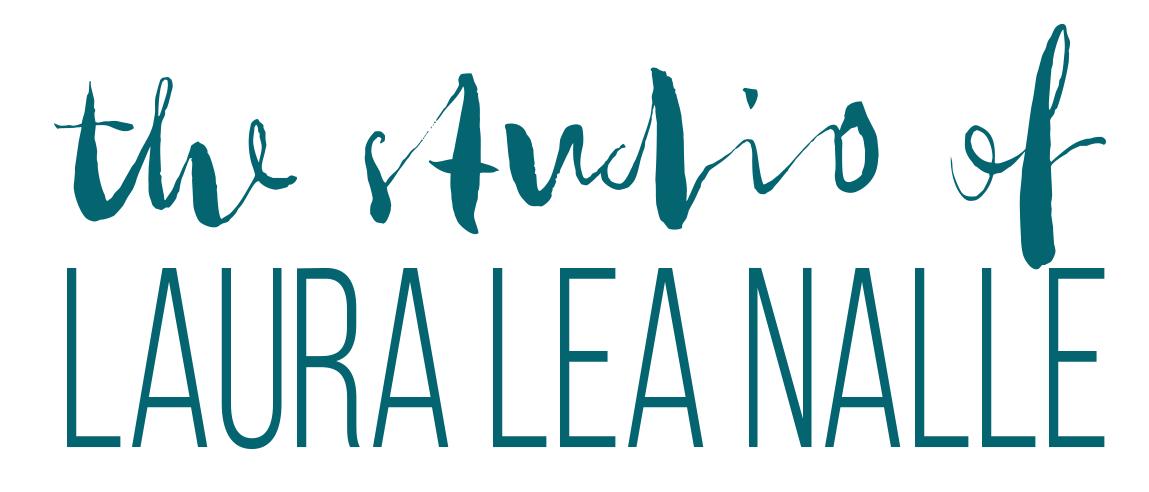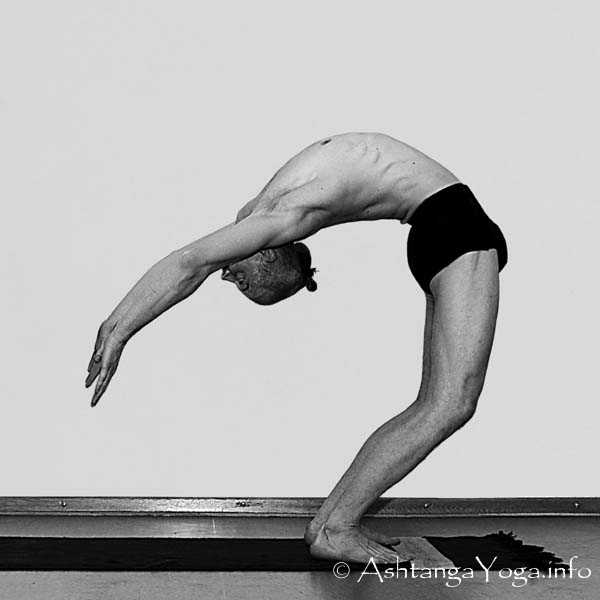The places you fear to go…
“No fear, no fun.” One of the things I love about Ashtanga, is that it requires me to confront some scary places. I started working on dropping back and standing up from urdhva dhanurasana (backbends) a few weeks ago. My teacher came up to me as I was going into the finishing sequence and asked if I wanted to try it. It hadn’t even occurred to me, much like many parts of the practice that at one time seemed so inaccessible I wouldn’t even attempt it. It’s one of the gateway postures in the primary series. Once I get to Mysore, I’ll need to be able to stand up on my own in order to move on to the intermediate series. He explained how we can work on it with him spotting me. I said it sounded really scary and that I was afraid. He said it was indeed terrifying. And I replied, “let’s do it!” with enough mock bravery to convince myself that maybe I could do it, or at least not break myself in half trying. We’ve continued to work on it in class, and it’s still pretty much as scary as it was that first day. But I’m getting more comfortable with the fear, and that, if anything, feels like progress. Pain is a guru, a gift. And so is fear. How can I unwrap it?
There’s all kinds of stuff packed into fear, but as I’m fond of saying or being reminded of as often as needed, “where there’s fear, there’s power.” That power cuts both ways. If I do not confront my fear, that thing will have power over me and will be an obstacle and limitation, often amplified into something monumental and insurmountable. But by confronting fear, I come to embody that power and open up those spaces that I feared to go. Those places are often the most fertile territories we can colonize within ourselves, and the rewards of such an endeavor echo into every area of our lives. We become empowered in all we do when we confront our fear. In addition to confronting the many layers of fear, there is a tremendous amount of trust I must give my teacher to not have me do something I’m not capable of doing, and of course, to not drop me on my head. The teacher is an archetype, a mirror in which the student glimpses previously unseen possibility. The most important gift a teacher can give is to be a clear reflection that allows the student to see what they are capable of, to help navigate and facilitate the student’s own self-discovery. And when it comes to backbending, I am not only trusting my teacher, but also myself. I have to trust I will stay focused and aware and not get all turned upside down and around and try to come up on the wrong count – which is precisely what happened a couple weeks ago. I got ahead of myself and all turned around (it’s hard to tell which way is what when you’re upside down) and I came up a count too early and damn near made us both wipe out. Luckily no one was hurt. It rattled my nerves a bit, but I got right back up and did the rest of my five drop backs. This made me realize that the trust cuts both ways too. It’s like mountain climbers tied together, even though the more advanced one leads the way, if either one falls, they could both potentially go down.
 And yet, the act of trusting is far deeper and infinitely more subtle than merely knowing I’m not going to get dropped on my head. Trusting can be terrifying, and all the times I gave my trust and was somehow betrayed come rushing to the surface. Whether intentionally or accidentally broken, the rupture of trust can be traumatic. Broken trust, most fundamentally, feels like a self-betrayal because it inevitably comes to the question, “How could I have allowed myself to trust an unworthy person?” That’s a heavy question to have to confront, and, for the faint of heart or meek of spirit, it can undermine the most basic sense of self. And now realizing that my teacher has to trust me to some degree too, I must rise to the occasion to be worthy of that trust. Breaking another’s trust is perhaps even scarier to me than the prospect of them breaking mine – and most certainly scarier than falling on my head. And so go the layers and layers of work to be done here, all potent and alive in just this one part of the practice. And so I breathe into all those spaces, and I acknowledge that trusting is scary, even scarier and more difficult for me than the actual backbends themselves. I’m sure my teacher sees some of these inner workings as I stand there preparing and trying not to freak out too much, outwardly at least. He reassures me so that I feel safe and supported. That reassurance is not just comforting physically, but even more so emotionally. The emotional dimension of feeling safe is profoundly transformative and healing territory for me, having grown up in a very emotionally unsafe family dynamic. I have done a lot of deep work to heal those early traumas, and still, when I push myself to the edges, tilting the mirror just enough to see into the darkest of spaces, there are still shadows wanting for the light. Those shadows cast hard edges, and it’s those edges that offer the greatest leverage for healing and discovery. The heat generated from the practice is purifying, it breaks up stagnation and old traumas and clears the way for the light to shine through. Combine that with urdhva dhanurasana being one of the most powerful heart opening asanas, and the conditions are ripe for some serious magic to happen. Dark places are coming into light. As one of my earliest yoga teachers from my highschool days in Idyllwild was fond of reminding us, backbends place the heart over the head. “That’s the medicine.” She was right, it is medicine, and it’s potent.
And yet, the act of trusting is far deeper and infinitely more subtle than merely knowing I’m not going to get dropped on my head. Trusting can be terrifying, and all the times I gave my trust and was somehow betrayed come rushing to the surface. Whether intentionally or accidentally broken, the rupture of trust can be traumatic. Broken trust, most fundamentally, feels like a self-betrayal because it inevitably comes to the question, “How could I have allowed myself to trust an unworthy person?” That’s a heavy question to have to confront, and, for the faint of heart or meek of spirit, it can undermine the most basic sense of self. And now realizing that my teacher has to trust me to some degree too, I must rise to the occasion to be worthy of that trust. Breaking another’s trust is perhaps even scarier to me than the prospect of them breaking mine – and most certainly scarier than falling on my head. And so go the layers and layers of work to be done here, all potent and alive in just this one part of the practice. And so I breathe into all those spaces, and I acknowledge that trusting is scary, even scarier and more difficult for me than the actual backbends themselves. I’m sure my teacher sees some of these inner workings as I stand there preparing and trying not to freak out too much, outwardly at least. He reassures me so that I feel safe and supported. That reassurance is not just comforting physically, but even more so emotionally. The emotional dimension of feeling safe is profoundly transformative and healing territory for me, having grown up in a very emotionally unsafe family dynamic. I have done a lot of deep work to heal those early traumas, and still, when I push myself to the edges, tilting the mirror just enough to see into the darkest of spaces, there are still shadows wanting for the light. Those shadows cast hard edges, and it’s those edges that offer the greatest leverage for healing and discovery. The heat generated from the practice is purifying, it breaks up stagnation and old traumas and clears the way for the light to shine through. Combine that with urdhva dhanurasana being one of the most powerful heart opening asanas, and the conditions are ripe for some serious magic to happen. Dark places are coming into light. As one of my earliest yoga teachers from my highschool days in Idyllwild was fond of reminding us, backbends place the heart over the head. “That’s the medicine.” She was right, it is medicine, and it’s potent.
As I continue to make progress with the physical practice, the emotional dimension continues to open up as well. As I come up from the backbend, the natural instinct is to lift the head. It’s an automatic reflex like blocking your face if some object is flying at you, but really the head should hang back and be the very last thing to come up. Lifting the head too soon can actually cause you to lose balance and fall back. I have to really fight the impulse until it becomes second nature to let it haaaaang back. Interestingly enough, keeping the head back also keeps the heart open, guiding the movement upwards. And so I ask myself in what other ways are my impulses and reflexes self-sabotaging and can cause me to lose balance and fall? Where else can I fight the knee-jerk reaction and train myself to haaaaang back? Where else do I close myself up instead of staying open? Where else do I let my head lead over my heart? What am I capable of when I remain open and trusting, when I surrender to the movement of the heart? And in practice last week, I caught a glimpse of what I’m capable of. In the final deep bend of the backbending sequence, I walked my hands in close enough that I could see my own feet from behind. At first I thought they were my teacher’s feet because it is very strange and unexpected and exciting that I’d be able to see my own feet in a backbend. I wonder what else will come into view in this wild, uncharted landscape. There is so much to discover, and I am so grateful, every day, for this practice, and the vistas it is revealing.
This is incredibly potent heart opening territory. And in some moments it is scary as all hell, and some moments it is so full of joy and wonder and discovery. This is where the work is. This is the place where I face my fears and see what I’m made of. This is the inner landscape that holds the kind of power and beauty that cracks the heart wide open.
And the light is dawning there…



